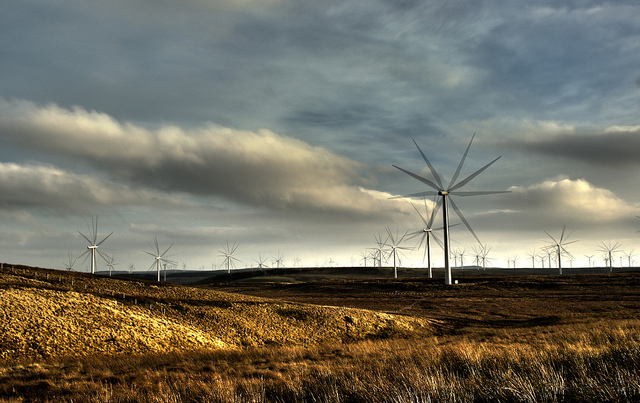On top of the ethical, environmental and epidemiological arguments, the animal liberation perspective can also provide an alternative historical view on growth. This article explores the historical connections between animal exploitation, growth and violence, and the lessons these offer for degrowth today.
A
previous article on this blog argued that degrowth should incorporate an ethic of animal liberation to achieve its aspired ‘good life for all’. In the wake of the COVID-19 pandemic, similar calls to
dismantle factory farming - which is a breeding ground for disease - have become louder. Both of these arguments critique the treatment of nonhuman animals as commodities for human use. On top of the ethical, environmental and epidemiological arguments, the animal liberation perspective can also provide an alternative historical view on growth. This article explores the historical connections between animal exploitation, growth and violence, and the lessons these offer for degrowth today.
Growth and Violence
At its core,
degrowth challenges the centrality of economic growth in our imaginations and policies, which fails to value social and ecological well-being. To build this critique, degrowth requires an understanding of where economic growth comes from. While degrowth scholars have discussed and criticised many perspectives on economic growth, one factor which has not received a lot of attention is animal exploitation.
To understand the connections between animal exploitation and economic growth, we first have to expand our understanding of growth. Especially since the second half of the 20th century, growth has been measured by one statistic: gross domestic product (GDP). GDP simply aggregates all economic activities. Here, I promote a broader historical view of growth. Growth certainly includes the amount of production, but we can also consider the growth of empires and the growth of powerful elites. Attached to these is a growth in violence.
So what does animal exploitation have to do with this growth in violence? According to sociologist David Nibert’s book
Animal Opression and Human Violence, quite a lot. First, we have to consider violence against nonhuman animals. Following the agricultural revolution roughly ten thousand years ago, humans started to capture, control and kill nonhuman animals for food and other resources. The commonly held view of
domestication as a benign process does not capture this inherent violence. As nonhuman animals’ “minds and bodies are desecrated to facilitate exploitation”, Nibert instead uses the term
domesecration. Beyond the violence towards nonhuman animals, Nibert argues that domesecration both
enabled and
promoted growth in violence between humans.
Domesecration and Growth
Throughout history, domesecration has
enabled growth by expanding the geographical reach and power of empires. Domesecrated animals were used for food, transportation, and military power, and therefore greatly increased the range of possible invasions. For example, herds of cows kept by the Roman army provided a constant food source which enabled the control of a vast territory. Also, the Mongolian pastoralists under Genghis Khan used horses for their speed and military advantage to violently raid civilizations across Eurasia 1500 years ago. The use of domesecrated animals enabled these empires and many others to invade and control great areas and accumulate resources for their elites.
However, beyond enabling growth by providing sources of food, transportation and military power, domesecration also itself
promoted growth. In other words, it required the violent accumulation of resources such as land and water to sustain itself, thereby driving growth. For elites throughout history, controlling large numbers of domesecrated animals meant both economic and political power. Thus, growing this power for the elites meant controlling more domesecrated animals. These domesecrated animals required ever-increasing amounts of grazing land and water. The need for these resources was a driving factor for the colonization of the Americas, first by the Spanish and Portuguese, and later by the British. Indigenous populations and other animals were killed and displaced in order to establish ranching operations which benefited the colonisers. It was these resources, violently accumulated through colonialism and domesecration that enabled the development of industrial capitalism.
Domesecration and growth therefore share a tight link, which was intensified by capitalism. Exploiting domesecrated animals was a profitable industry for capitalists, and in turn the capitalist need for growth led to more domesecration. Throughout history, then, domesecration has expanded production and economic growth. Even more importantly, it has also led to the growth of elites, empires, and violence towards nonhumans and humans. So, what does understanding the relationship between domesecration and growth mean for degrowth debates today?
Conclusions for Degrowth
In the words of
Nibert, “domesecration undermined the development of a just and peaceful world”. As degrowth activists fight for such a world, and a ‘good life for all’, I argue that degrowth needs to acknowledge and analyse a crucial factor hindering this vision: animal exploitation. Combining animal liberation and degrowth makes sense for
ethical and ecological reasons, and can also help
prevent future pandemics like COVID-19. This article adds yet another argument: the need for a better understanding of the historical connection between animal exploitation, violence and growth. Insights from critical animal studies, such as those outlined here, can help us better understand the very nature and development of growth itself. Only by properly understanding the core of growth, its drivers and violent consequences, can we create alternatives that ensure a ‘good life for all’.

